Agra in the State of Uttar Pradesh is one of the “Golden Triangle” of cites along with New Delhi and Jaipur, a route which is popular with travellers in India, and has comfortably the smallest population of the three. My own first impression of Agra was that it was like any other city. It was hot, very hot in April. There was pollution, but also plenty of greenery. And of course there were tuktuk drivers at the station having arguments with taxi drivers over who was going to give me a lift. In most cases, and especially to and from airports, it was recommended to me to use pre-paid taxis as the fee is set beforehand and there are no sneaky price hikes on reaching your destination. It caused a fuss when I decided on one of these over a tuktuk at Agra station with my chosen taxi driver getting a load of abuse, but it was worth doing.
Agra is a nice, but understated city, and not the kind of place you’d expect to find a landmark flooded by millions of visitors per year from all corners of the world
Agra itself turned out to be more memorable than I originally thought it would be, however. After being dropped off at one of the gateways leading to the Taj, I stopped for breakfast in a cafe across the road. Pav Bhaji, a dish consisting of a spicy vegetable curry dipping sauce served with a buttered roll, was recommended to me by the owner and it wasn’t until later on in my trip that I realised how popular this meal actually is around India, especially in the Maharashtra region a bit further south. Its a quick and easy snack, main meal or even breakfast, and you can get it in most restaurants with varying degrees of savouriness.
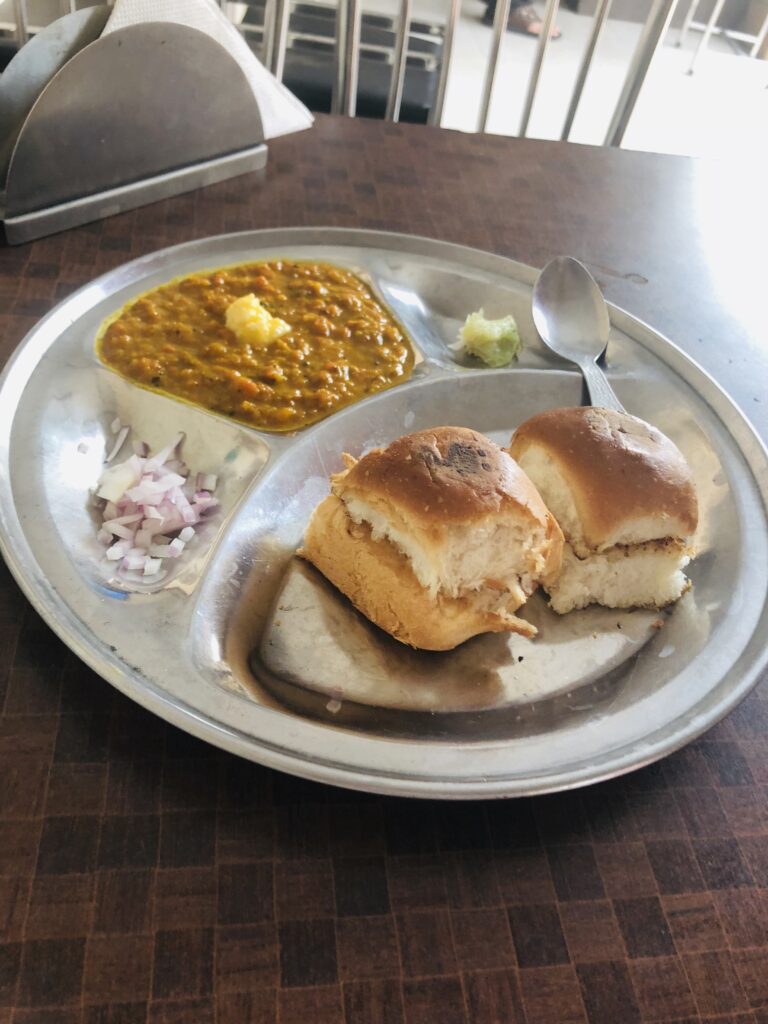
Once I was done eating I made my way through the Taj gardens. Agra is a nice, but understated city, and not the kind of place you’d expect to find a landmark flooded by millions of visitors per year from all corners of the world. The layout of the grounds where the Taj Mahal is built seems to have been cleverly thought through to reflect this, almost as if the people who planned it wanted to ease you into the main attraction as you stroll along. They’ve done a good job of hiding the Taj Mahal until you catch small glimpses of it as you get nearer and start to realise the gravity of what you are about to see. The queues to get in were pretty long for locals but there was a charge of around 1,100 rupees (around £12) for foreigners which involved a queue-jump. Locals were understandably let in for free since they had a longer wait. After taking a while to get through security I finally turned to look through an archway that gave me a full view of one of the world’s 7 modern wonders.
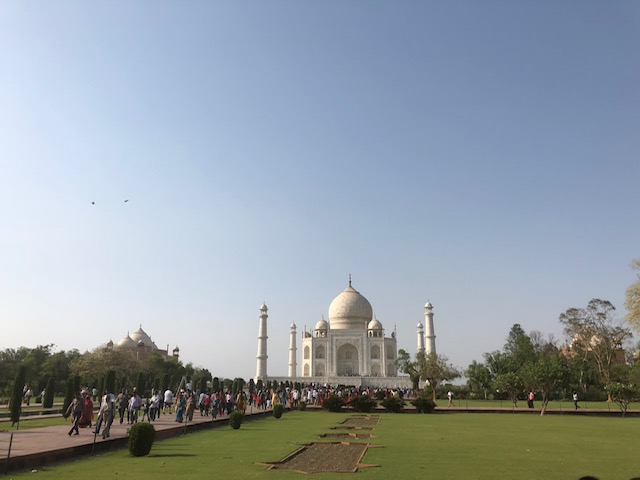
A lot of travellers I met in India never seemed to fully appreciate the Taj Mahal, approaching it as something they had to do while they were there purely because they knew people back home would want to know about it. It was slightly out of the way, I was told, and the thought of dealing with all those tourists in that heat was unbearable. As I looked at its ivory marble blocks changing shade against the moving sun and reflected on its influence in the last few centuries of India’s history, I couldn’t help feeling more positive about this place. I could happily look at the view all day, the grounds’ tree-lined shallow waters reflecting different parts of the structure, the pathways leading towards it that were a dream to wander through, and although its preservation has been less than perfect it felt like somewhere that every traveller must tick off their list at some point.
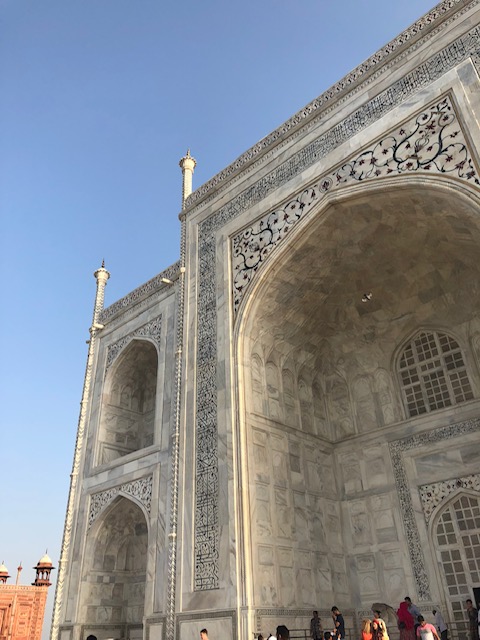
We were one of the last groups of people that day to get a look inside, and while the site itself is massive I remember being surprised at how small the interior actually was. However, as I suspected, the level of detail inside the mausoleum was amazing, with floral carvings, scriptures and precious stones embedded into the marble reaching the ceiling, and arches surrounding you from all sides. Its obvious how talented the architects were, and I was interested to hear the myth that they were blinded and had their hands cut off by Emperor Shah Jahan after it was built so as to avoid having a new building made to rival it. There’s no real evidence to suggest this actually happened, but it says a lot about the Taj Mahal’s standing in Indian culture that this story persists.
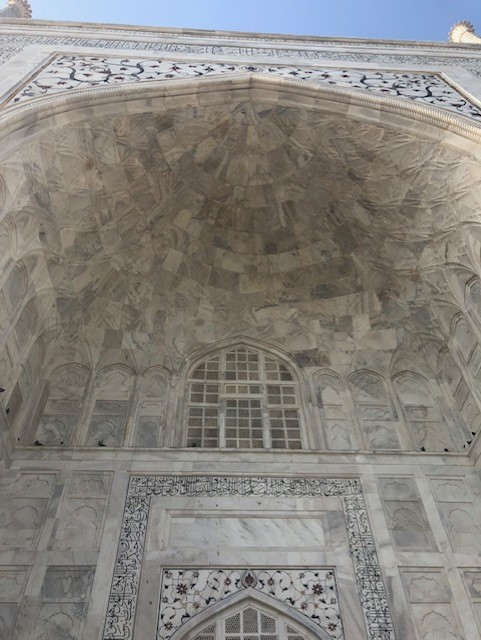
Leaving the grounds I felt some sadness about coming to the end of an experience that I’d so looked forward to on touchdown in New Delhi, and after stuffing the nylon sandals I was given to wear inside the building into my rucksack as a souvenir I began looking through the hundreds of pictures I’d taken while wondering around, looking for the one that could best represent my emotions about the place.
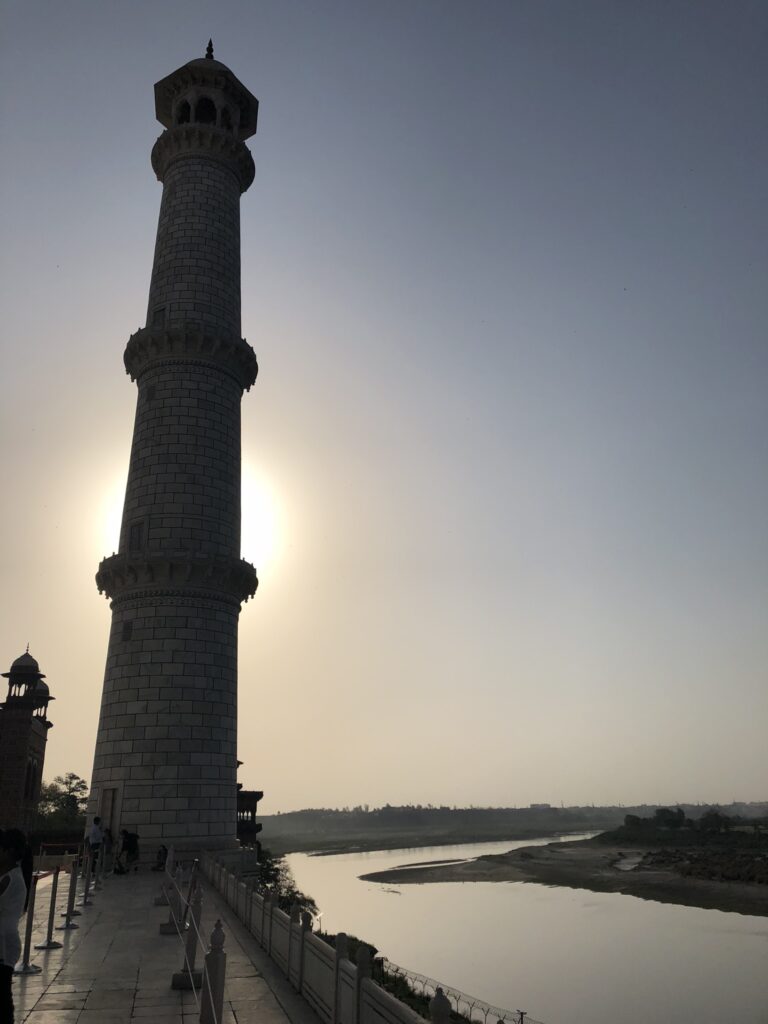
At the end of a long and rewarding day I headed to Agra Cantt station to once again take part in India’s less glamorous (but just as important) tradition, and use up my budget train ticket back to New Delhi.
I’d gained a lot of respect for the railway system. Being surrounded by the chaos of people coming and going, and busy families carrying their life’s possessions I started to realise how important it was to India’s population to be able to not only connect with other people around their enormous country, but to also see first hand what their land has to offer in spiritual terms as well.